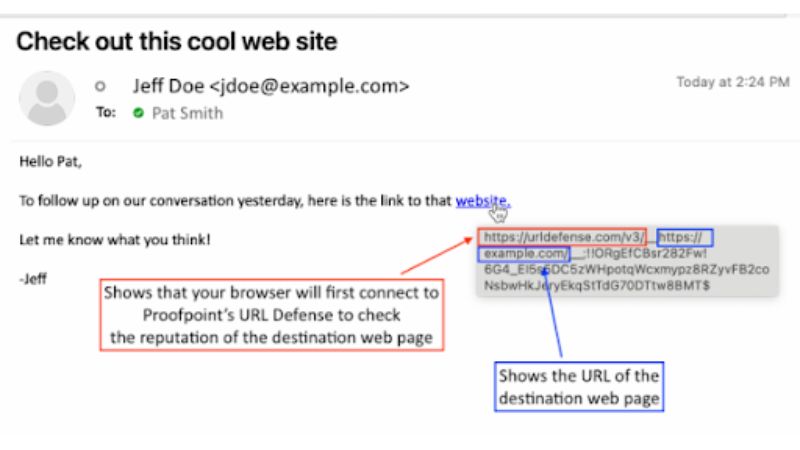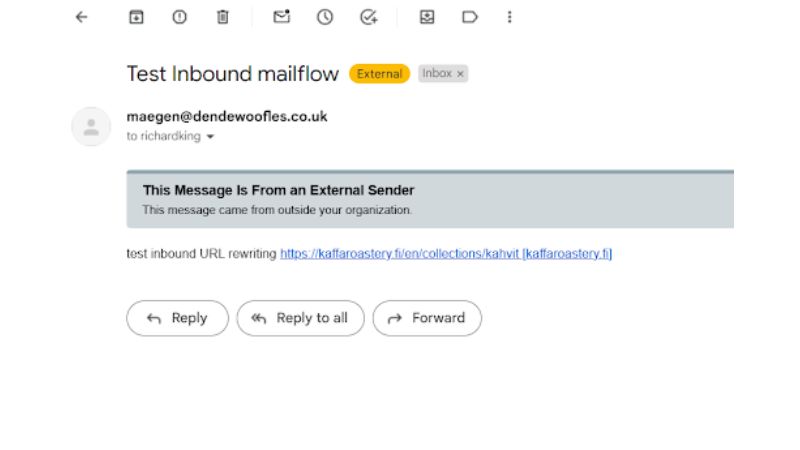Improving email security at Brookes

Email is the most likely starting point for a cyber security attack on the University, so throughout 2024 we have been improving our controls to keep everyone safe.
Since we first talked about these changes in April, new ways to report suspicious messages with PhishAlarm have been implemented.On 19 November, further improvements will be implemented to keep the University safe. Once those improvements are in place, you will notice some changes in how your emails appear.
Appearance of links in emails
New security tools will rewrite links (URLs) in emails so that when you click on them a layer of protection will be added before you are directed to the destination website.
What will the links look like?
In the email body, links that have been rewritten will appear the same at first glance, but if you hover over the link (or press and hold if using a mobile device) the destination will start with “https://urldefense.com”. An example of how this will appear on the screen is shown in the image. If you are using a screen reader that reads out links in full, it will read out this longer URL.
New warning banners in emails
No technical control is perfect, so it is possible that malicious emails may still be delivered to your inbox. The best defence for the University is your good judgement. To help your decision-making, from 19 November new warning banners will also be applied to emails from external senders.What will the warning banners look like and what do they mean?
There will be a variety of different warning banners depending on the threat that the email may represent. As an example, the warning banners will appear as shown in the image, in addition to the yellow “External” tag that is currently applied.
